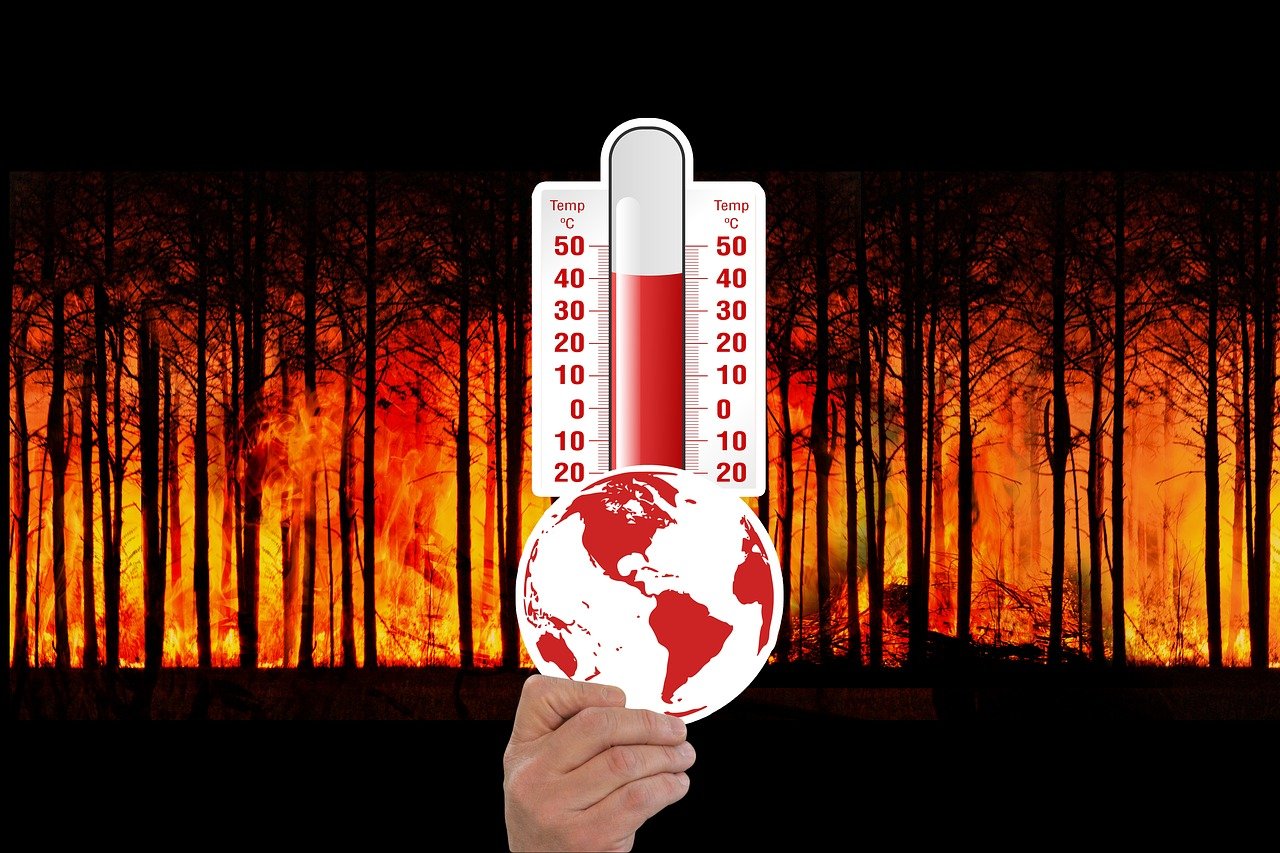

In this second instalment of our series on climate change, we investigate the path forward in the effort to limit global warming and climate change. In particular, we discuss two key parameters on which scientists and policymakers are focusing: net zero emissions and carbon budgets.
Our goal is to argue neither for nor against the reality of global warming but rather recognize that many countries and companies are starting to act to limit it. We explore how these actions will impact societies, economies and markets over time. Whatever their personal views, investors must understand the science and motives behind this drive to better understand the investment opportunities and risks ahead.
This article is only available to Macro Hive subscribers. Sign-up to receive world-class macro analysis with a daily curated newsletter, podcast, original content from award-winning researchers, cross market strategy, equity insights, trade ideas, crypto flow frameworks, academic paper summaries, explanation and analysis of market-moving events, community investor chat room, and more.
Summary
- In the second instalment on climate change, we discuss two key parameters for understanding climate change policy: net zero emissions and carbon budgets.
- To achieve net zero emissions, we must reduce emissions (doable if the will is there) and remove carbon from the atmosphere – a hypothetical today at best.
- If little is done to substantially reduce emissions soon, climate scientists project atmospheric carbon levels will breach the 1.5°C goal around 2028 and the 2°C goal around 2047.
- Based on current commitments to cut GHG emissions, global temperatures could rise 2.4°C by 2100.
Market Implications
- If climate scientists are right about the trajectory of global warming, many countries could start desperate and belated efforts in coming years to curb GHG emissions – something akin to a war mobilization. Until then it may be largely business as usual.
In this second instalment of our series on climate change, we investigate the path forward in the effort to limit global warming and climate change. In particular, we discuss two key parameters on which scientists and policymakers are focusing: net zero emissions and carbon budgets.
Our goal is to argue neither for nor against the reality of global warming but rather recognize that many countries and companies are starting to act to limit it. We explore how these actions will impact societies, economies and markets over time. Whatever their personal views, investors must understand the science and motives behind this drive to better understand the investment opportunities and risks ahead.
By Way of Background…
In the Paris Agreement of 2015, 196 countries agreed to try to limit the increase in global temperature since pre-industrial times to 1.5°C (but well below 2°C in any case) and achieve climate neutrality by 2050. The Intergovernmental Panel on Climate Change (IPCC) followed in 2018 with its Special Report on Global Warming of 1.5°C, an exhaustive review of the climate change and social science literature about achieving the 1.5°C goal. These two documents are the backbone of efforts to limit global warming.
In our first instalment, we reviewed several clear facts about climate change since the Industrial Revolution:
- Since 1880, the average global temperature has risen 1.1°C.
- The sea level has risen about 245mm, or 9.5in.
- A strong relationship between the level of atmospheric carbon and global temperature has existed for at least the past 500 million years.
- Atmospheric carbon dioxide has jumped to 415 parts per million (ppm) since 1880, after being in a stable range between 200 and 300ppm for the preceding 800,000 years (Chart 1).
 Source: The Conversation
Source: The Conversation
The enormous jump in carbon over the past century is what has triggered concerns about the potential for global warming well over 2°C if we do nothing to slow carbon emissions.
Net Zero Means Net Zero
The IPCC, drawing on scientific consensus, has determined that greenhouse gas (GHG) emissions must be reduced to net zero to stabilize the global temperature, preferably by eliminating emissions as much as possible. Yet completely eliminating emissions will be impossible, so achieving net zero means some GHGs (particularly carbon) will have to be removed from the atmosphere to offset any remaining emissions.
The primary GHGs are carbon dioxide (CO2), methane (CH4), nitrous oxide (N2O), and various fluorinated gases.[1] CO2 accounts for about 80% of total greenhouse gases; the others are small with methane at 10%, nitrous oxide at 7% and other gases at 3%.[2] Chart 2 clearly shows CO2 accounts for most of the growth in GHGs over the past 40 years; the other GHGs have been relatively stable.
 Source: Climate.gov
Source: Climate.gov
Reaching Net Zero Means Removing Some Carbon
Compared with carbon, limiting non-carbon emissions and removing them from the atmosphere is more difficult. Consequently, carbon is the primary focus for reaching net zero.
Chart 3 provides a schematic for reaching net zero under a 2°C scenario. In the early 2020s, total GHG emissions reach about 55 gigatons in carbon equivalent terms. Carbon emissions are steadily reduced, and around 2050 carbon emissions are net zero, as enough carbon is removed to offset remaining carbon emissions. Around 2075, GHGs reach net zero emissions as carbon removal is sufficient to offset all remaining GHG emissions. Ideally, society will continue to remove atmospheric carbon to create negative net emissions, thereby gradually reducing the global temperature (lower panel).
While reaching net zero primarily entails reducing emissions, removing carbon from the atmosphere is also essential.
 Source: Nature
Source: Nature
The first part – reducing emissions – is straightforward. It mostly requires an act of collective will to do things like invest in renewable power, switch to electric cars, and change dietary habits. It won’t be not easy, but it is doable.
The second part – removing carbon from the atmosphere – is far more problematic. One approach is to plant more forests that would absorb CO2 through photosynthesis. It is unclear whether this could be done on the scale necessary to reach net zero or net negative emissions. Even if it could be, there will be difficult trade-offs between land use for agriculture versus forests and issues about potentially reducing or changing biodiversity in undesirable ways. The second approach is some industrial process that can remove atmospheric carbon and store it. This technology is only nascent, and again whether it can be deployed on a scale to make a difference is still unknown.
Bottom line, carbon removal currently remains more a hypothetical possiblity.
Carbon Sinks Will Not Help With Reaching Net Zero
One final point on net zero is that even though only about half of carbon emissions enter the atmosphere (landmass and the oceans absorb the other half), it is still necessary to offset all carbon emissions rather than just the net amount that enters the atmosphere (Chart 4). The reality is that whatever carbon emissions are, roughly half will enter the atmosphere. So, cutting carbon emissions from the current 40 GT to 20 GT still means that about 10 GT of carbon will end up in the atmosphere.
 Source: Our World in Data
Source: Our World in Data
Carbon Budgets Are Nearly Topped Out
As noted, a close relationship exists between atmospheric carbon levels and global temperatures. A corollary is that if carbon levels are stabilised, global temperatures should also stabilise.
This has given rise to the concept of a carbon budget – the most carbon that can enter the atmosphere to limit the temperature increase to 1.5°C or 2°C. According to the IPCC, the remaining carbon budgets as of yearend 2017 were 420 GT for 1.5°C and 1,170 GT for 2°C. We have used about 148 GT of that budget so far, resulting in remaining carbon budgets of 272 GT and 1,022 GT, respectively.
To date, about 3,240 GT of carbon has accumulated in the atmossphere, or 415 ppm. Recognizing that only half of carbon emissions enter the atmosphere, the maximum atmospheric carbon budget is effectively 3,376 GT for the 1.5°C scenario (3,240 GT + 0.5 * 272) and 3,751 GT for the 2°C scenario. This corresponds to 432ppm and 480ppm of atmospheric carbon, respectively.
Currently, atmospheric carbon is rising by about 20 GT annually, or 2.5ppm. If carbon emissions continue at this rate, the 1.5°C budget will be breached in seven years, or 2028, and the 2°C budget in 26 years or 2047.[3] We have boiled these down to point estimates, but of course in reality, the climate and humanity are quite variable. Assuming little is done to reduce carbon emissions, we could breach these carbon budgets a few years earlier or later.
The message from climate scientists is clear. Society must start taking immediate and drastic steps to cut carbon emissions if there is to be any chance of limiting the temperature increase to 2°C let alone 1.5°C. The IPCC says carbon emissions must be halved by 2030 and net zero hit by 2050 to have any reasonable chance of limiting the temperature increase to 1.5°C. The comparable dates for the 2°C scenario are 2038 and 2065.
Chart 5 indicates where we are. If countries pursue current policies, the global temperature rise since pre-industrial times will approach 3°C in 2100. If countries honour their pledges to date, the temperature increase is projected to be 2.4oC – a big ‘if’ given many countries are yet to implement policies to achieve these goals.
 Source: Our World in Data
Source: Our World in Data
To cite two examples: the EU is embroiled in a debate over whether burning trees to generate power is carbon neutral and a form of renewable energy or net carbon emitting. The underlying hot button issue is that the EU cannot meet its goal to generate 30% of its energy from renewable sources by 2030 if it is not. And in the US, clean energy is absent from the bi-partisan infrastructure bill because Republicans refuse to consider clean energy infrastructure.
This kind of form-over-substance policymaking all but guarantees we could get a pretty good idea in coming years of how right or wrong climate scientists are.
Coming Up: The Proof Will Be in the Pudding
In our next instalment, we will explore what climate scientists are projecting for the climate and environment if global temperatures stabilize at +1.5°C or 2°C. That should give investors a better handle on the risks associated with continued global warming.
For now, the emerging implications for investors are fairly clear. Given the (muted) response to date to potential global warming, we will soon discover whether climate scientists are correct about its trajectory and the likely impacts on the climate and environment. Meanwhile it will be largely business as usual, with the prospect that at some point many countries will probably start desperate and belated attempts to curb carbon emissions – an effort that could be akin to a major war mobilisation.
-
Throughout this article we use the terms carbon, carbon dioxide and CO2 interchangeably. ↑
-
Water vapour is also a greenhouse gas that contributes to global warming but it constantly moves in and out of the atmosphere and is not directly related to human activity. ↑
-
For more analytical readers, 1ppm of atmospheric CO2 equals 7.8 GT of atmospheric CO2, or 15.6 GT of gross carbon emissions, half of which is absorbed by oceans and landmass. Total atmospheric carbon equals 415ppm * 7.8 ~ 3,240 GT. About 20 GT of carbon goes into the atmosphere annually, resulting in a 2.5ppm increase (20 / 7.8 ~ 2.5 ppm). If the 1.5°C limit is 432ppm, or an increase of 17ppm, then 17 / 2.5 ~ seven years. ↑
